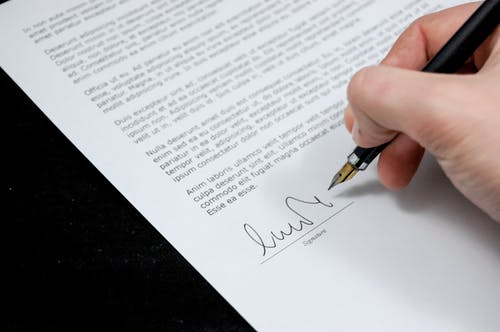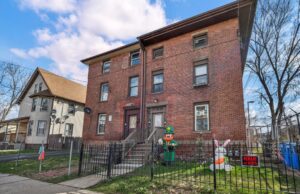What Is a Lease Agreement?
A lease agreement is a binding contract between a tenant and a landlord. It outlines the legal terms and conditions that the tenant and the landlord have agreed on about the tenancy.
It is a legal requirement that sets out the contractual obligations of both the landlord and tenant, thereby reducing the risk of any future misunderstandings. Its purpose is to provide both the landlord and the tenant with adequate future security and protection. In the event of a dispute, the tenancy agreement will serve as a reference.
The terms and conditions in the tenancy agreement need to be within the law. If a term in the tenancy agreement is against the statutory rights of either the landlord or tenant, that term can’t be enforced. The agreement should be in writing and signed by both the landlord and the tenant.
If you are a first-time landlord looking to rent out your property, you must know how to write a lease agreement letter. Your tenancy agreement ought to be comprehensive and cover everything you may need to rely on in the future. Regardless of the type of rental property you own, your tenancy agreement needs to include some basic things. As a rental property management company, ensuring that these elements are carefully incorporated into your lease agreements can streamline operations and mitigate.
The following is a brief outline of some of the most important things that every tenancy agreement should include:
1. Details of all parties to the tenancy agreement
One of the important things to include in a rental property lease is the details of all parties to the tenancy. This includes the names and contact details of both the landlord and the tenant. You should include the names of all adult tenants who will be permanently residing on the premises. This ensures that all adults living on your property are legally responsible for all terms as defined in the tenancy agreement. Therefore, you can terminate the tenancy agreement if any of the listed tenants violate the terms of the lease. It can also include a guarantor who pledges to pay the rent in case the tenant is unable to.
2. Description of the rental property
A residential lease agreement needs to have a good description of the rental property controlled by the lease agreement. This may include the full address and apartment number of the property.
3. The term of the tenancy
Every tenancy agreement should state whether it is a fixed-term lease or a rental agreement that runs from month to month unless terminated by the landlord or the tenant. Fixed-term leases typically last for a year, with options for renewal after the fixed term has expired. Your choice will be dependent on how long you want the tenant to be in your rental unit and the flexibility you want in your tenancy arrangement.
4. Limits on occupancy
This clause gives the landlord the right to limit the number of occupants of the property. The tenancy agreement should have a list of the names of everyone who will occupy the property. Only tenants who have signed the lease, together with their minor children, can reside in the rental property. Tenants cannot sublet the unit, pass the tenancy to another party or take in lodgers without prior permission. The landlord has the right to determine if the people living in the investment property are those he/she had screened and approved. If the landlord allows subletting, it should be made clear in the tenancy agreement.
5. Rental rate and form of payment
The tenancy agreement should spell out the rental rate. You can determine how much rent to charge by using a rental property calculator like Mashvisor’s.
The agreement should also outline when the rent payments are due and the preferred method of payment. It should also state what bills are included in the rent. Penalties for payment default and circumstances under which the amount of rent may be increased should also be stated.
6. Details of the security deposit
The amount of security deposit, when and how to use it, and the terms of its return need to be in the tenancy agreement. The agreement should also be clear about the fees that can be deducted from the security deposit. The scenarios in which the security deposit can be fully or partly withheld should be outlined. For example, it can be because of rent arrears or to repair the damage the tenants have caused. To learn more, check out our blog post “Do’s and Don’ts of Connecticut Security Deposits.”
7. Inventory
The tenancy agreement should contain details of the condition of the property and its contents. This includes any furniture, curtains, or fittings provided by the landlord. This is to ensure that tenants don’t get charged for damage that already exists. It prevents any arguments about any disappearing or broken fixtures and fittings from the house.
8. Pet details
It should also be clearly stated in the tenancy agreement whether pets are permitted in the rental property. If it is a pet-friendly rental, the agreement should set out the maximum number of pets allowed. Any restrictions on the type or size of the pets allowed should also be stated. Moreover, the agreement should address the tenant’s responsibility to ensure that the rental property is kept clean.
9. Giving notice
The tenancy agreement will also state the conditions for ending the tenancy early by any of the parties, how much notice will need to be given, and if there are any costs. Statutory rules on how much notice needs to be given should be followed. This may be dependent on the type of tenancy and the reason it is due to end.
The Bottom Line
Being a landlord requires that you know what to include in a lease agreement. What is included may vary from one tenant to another. However, it is important to note that all terms included in the tenancy agreement must be fair and follow the law.
At Idoni Management, we understand the importance of crafting detailed lease agreements that protect both landlords and tenants. If you have any questions or need assistance with your rental property management needs, don’t hesitate to contact us or give us a call on
(203) 244-7379.





